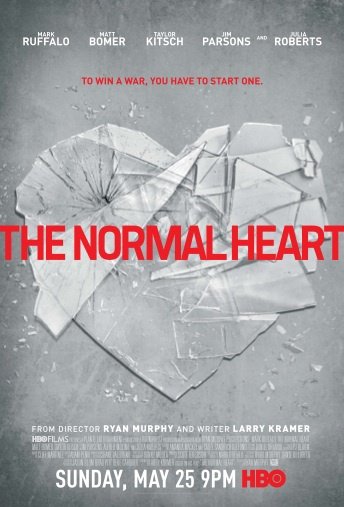 Recently, after a long day of service, I found myself lounging on my couch flipping through the television channels. I came across a Lifetime movie entitled Girl, Positive. To my surprise, the movie was about a young woman infected with HIV, the very public health issue I deal with every day at my AmeriCorps service. I was surprised, however, that the movie took a slightly different perspective on HIV than I am used to seeing in mainstream media. It chronicled a high school girl becoming infected with HIV after having unprotected sex with a popular boy at her school. The movie portrayed two powerful messages: anyone can become infected with HIV, and a positive test result is no longer a death sentence. This Lifetime movie prompted me to reflect on the evolution of HIV and AIDS and how they have been depicted in today’s popular media.
Recently, after a long day of service, I found myself lounging on my couch flipping through the television channels. I came across a Lifetime movie entitled Girl, Positive. To my surprise, the movie was about a young woman infected with HIV, the very public health issue I deal with every day at my AmeriCorps service. I was surprised, however, that the movie took a slightly different perspective on HIV than I am used to seeing in mainstream media. It chronicled a high school girl becoming infected with HIV after having unprotected sex with a popular boy at her school. The movie portrayed two powerful messages: anyone can become infected with HIV, and a positive test result is no longer a death sentence. This Lifetime movie prompted me to reflect on the evolution of HIV and AIDS and how they have been depicted in today’s popular media.
The media we consume is constantly shaping our views and opinions. For many people, representations in the media are their frame of reference for things they otherwise wouldn’t have exposure to in their everyday lives. I admit that before I became a Health Educator at the University of Florida’s Center for HIV/AIDS Research, Education and Services, most of what I knew about HIV and AIDS came from movies or television. However, most of the media’s stories are not reflective of the changing HIV positive demographic or of advances in HIV treatment that are saving millions of lives around the world. In the past, AIDS was thought of as only a gay man’s disease, and Hollywood is still presenting stories of the white man’s battle with AIDS in the 1980s and 90s. The media must do more to educate us on the reality of HIV today.
The first big Hollywood movie to feature an AIDS storyline was the 1994 movie Philadelphia. In it, Tom Hanks stars as a closeted gay lawyer in New York City who is dying of AIDS. This highly praised film finally brought HIV and AIDS to the public eye. At that time, the truly effective combination therapy used to treat HIV today was not yet readily available, and dying of the disease was an unfortunate reality. In the last few years, two critically acclaimed movies, Dallas Buyers Club (2013) and The Normal Heart (2014), have also portrayed AIDS storylines, and like Philadelphia, these movies tell the stories of white men’s struggles with AIDS during the 1980s. Living with an HIV infection has evolved so much both socially and medically since the 1980s. The virus has spread across genders, ethnicities, and social classes, but these stories are not reflected in the majority of today’s mainstream media.
Another topic that mainstream media neglects to portray is the reality of being HIV positive today. In 2015, with proper treatment and  adequate medical care, individuals can live long and healthy lives while being HIV positive. There are, of course, many barriers that HIV positive people continue to face, such as stigma and socioeconomic barriers to treatment. But up-to-date and realistic media portrayals of the disease could help combat these barriers.
adequate medical care, individuals can live long and healthy lives while being HIV positive. There are, of course, many barriers that HIV positive people continue to face, such as stigma and socioeconomic barriers to treatment. But up-to-date and realistic media portrayals of the disease could help combat these barriers.
As of 2011, 57% of persons living with HIV in the United States are men who have sex with men (MSM), meaning that almost half of those living with HIV are not MSM1. Youths (ages 13-24) account for 26% of new HIV infections each year, despite only making up 17% of the population1. African Americans make up 12% of the US population, but account for up to 44% of new infections each year2. Youth, people of color, and individuals of low socioeconomic status are disproportionately affected by HIV, yet their stories remain untold in popular media. Portrayals of healthy, HIV positive individuals in the media could be a step forward in shifting the way we view HIV as a society. HIV positive storylines should be expanded to reflect the changing face of HIV in America.
It is important to acknowledge that there have indeed been strides towards changing the way HIV is depicted in popular media. For example, a 2007 episode of Grey’s Anatomy highlighted the realities of HIV and pregnancy for HIV positive women. An HIV positive patient was informed that with proper treatment, she has a 98% chance of delivering an HIV negative baby. The 2009 film Precious tells the difficult tale of a 16-year-old black female who, among several other life traumas including neglect and abuse, is diagnosed with HIV. The movie is uplifting; it does not portray her diagnosis as a barrier, but as something that will not stop her from trying to succeed in life.
I recently decided to discuss HIV representations in the media with the support group I facilitate for patients monthly at UFCARES. In preparing for the discussion, I found many old PSA flyers on the Internet that were used during the 1980s, at the beginning of the HIV epidemic. I then prepared examples of current HIV education materials, so we could compare them. I also compiled a list of some of the best movies depicting HIV storylines. At support group, I posed the question “What does the media tell us about HIV?” Many of the patients were quick to share their thoughts. Some members shared that they believe it is only shown in a negative light, which perpetuates the stigma they already feel. Others discussed the lack of HIV in the media. “It’s only shown as a gay disease” was the most common comment, and we discussed the prevalence of movies showing HIV as a gay, white man’s disease at length. It can be noted that all members of the support group are African American, and many voiced that they have never seen a portrayal of HIV that is similar to their own experiences. The group was in consensus that a better representations of HIV could help eliminate some of the stigma and ignorance they deal with in their communities.
Accurate representations of what HIV is like today is important for decreasing stigma and spreading accurate knowledge about HIV. It is important for popular media to begin telling more stories about the reality of being HIV positive today, and not just what is was like in the 1980s and 90s. The power of mainstream media is that spreading this kind of current, accurate information can even help to stop the spread of the virus itself.
References
1CDC. Monitoring selected national HIV prevention and care objectives by using HIV surveillance data—United States and 6 dependent areas—2012. HIV Surveillance Supplemental Report 2014;19(No.3). Published November 2014.
2CDC. Estimated HIV incidence in the United States, 2007–2010. HIV Surveillance Supplemental Report 2012;17(No. 4). Published December 2012.

This blog post was written by NFHC member Katherine Logan.
Katherine serves at UF C.A.R.E.S as a Health Educator.
